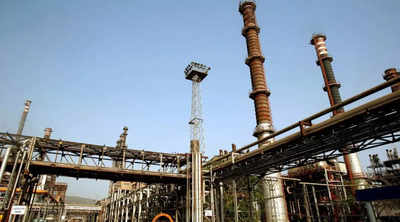India’s crude cost hits a decade high
[ad_1]

NEW DELHI: India’s crude cost rose to $121.28 per barrel on Thursday, the highest since March 9, 2012 when it had hit $125.13. This has pushed the monthly average in June to $118.34 per barrel, a level last seen in April 2012 when the price averaged $118.64.
The decade-high crude cost will further shrink bottom line of state-run retailers as they keep pump prices frozen and squeeze the government’s fiscal headroom harder by adding inflationary pressure and jacking up subsidy and oil import bills, which impact macro-economic parameters.
India imports 85% of its oil. The Indian Basket, or the mix of crude bought by India, follows the global benchmark Brent, which has 24% weightage in the mix.
Brent has been on an upswing since last year as demand rebounded and supply remained tight, essentially due to OPEC+ grouping’s refusal — and in part, inability — to pump up the volume to the desired level.
While prices shot through the roof after February 24 when the Russia-Ukraine conflict broke out, state-run retailers did not raise pump rates — under informal government advisory — to match the pace of increase in oil prices. This has pushed up under-recoveries on petrol and diesel to Rs 18 and Rs 21, respectively.
This has skewed the fuel retail market as private retailers such as Reliance Industries and Nayara are letting their pumps run dry or pegging retail prices higher than state-run companies to avoid supplies as dealers refuse consignments. This has led to a demand rush on petrol pumps of state-run companies. This led to sporadic reports of pumps running dry in the hinterland due to delayed replenishments.
Pump price had remained frozen for 137 days in 2020 before the Centre cut excise duty on petrol and diesel by Rs 5 and Rs 10, respectively on November 4. Since then prices were raised by Rs 10 per litre before the Centre again cut excise duty on May 22 by Rs 8 on petrol and Rs 6 on diesel. The prices remain frozen since then and are aligned to $85 per barrel of crude.
The higher oil import bill impacts government math by increasing the fuel and fertiliser subsidy bills as well as current account deficit by raising demand for dollars, impacting the rupee. This has a cascading effect on inflation, already at a high of 7.8%, and has bearing on other parameters such as interest rates.
FacebookTwitterInstagramKOO APPYOUTUBE
[ad_2]
Source link










